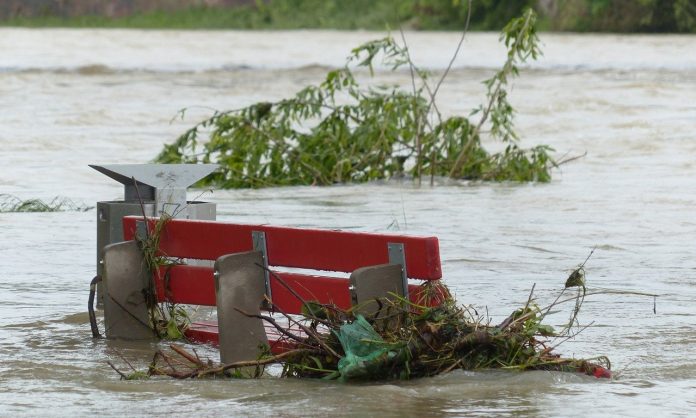By Jose de Mayne Hopkins, below, Sustainability & ESG Technical Director, MHA
 The UK government has announced climate disclosures are to be made mandatory across the UK economy by 2025, which means SMEs will be required to integrate the Taskforce on Climate-Related Financial Disclosure (TCFD) strategic framework into their business model and decision making. The integration of climate change will affect the assumptions and judgments applied on their financial statements.
The UK government has announced climate disclosures are to be made mandatory across the UK economy by 2025, which means SMEs will be required to integrate the Taskforce on Climate-Related Financial Disclosure (TCFD) strategic framework into their business model and decision making. The integration of climate change will affect the assumptions and judgments applied on their financial statements.
Research from Lloyds Bank indicates Small-Medium Enterprises (SMEs) operating in the UK remain largely unprepared as to how to integrate TCFD. A lack of government guidance and policies around Net Zero have led to a significant lack of technical understanding as to how to approach climate scenario analysis. In June 2022, the UK Climate Change Committee (“CCC”) report identified significant gaps in the UK government’s Net Zero strategy, including a lack of guidance impacting SMEs’ understanding of reporting on energy efficiency in commercial buildings, carbon accounting & measurement, carbon credits and medium to long term decarbonisation strategies.
SMEs have been left in the dark. They don’t clearly understand the impact of the UK becoming a Net Zero economy by 2050 and how to approach the implementation of a net-zero framework across their operations and value chain. While some businesses may take comfort in the distant milestone, SMEs need to begin talking to climate and carbon accounting specialists and critical stakeholders and start planning their approach. This should include implementing awareness training on these matters across the whole organisation (including suppliers). TCFD is not a reporting checklist, and understanding carbon accounting and climate risk can be extremely complex.
While a recent report by Aldermore highlights that more than half of SMEs have invested in environmental sustainability over the past year, they remain significantly behind their larger competitors. As climate regulations are often written with larger corporates in mind, SMEs have to play catch up with fewer resources, putting them at a significant disadvantage.
Ahead of the 2025 TCFD enforcement, there are four key areas SMEs should prioritise to begin the integration of TCFD and climate change to support the reporting of their net-zero journey:
Understand what net-zero really means:
SMEs need to start introducing awareness and external training on carbon accounting, including how to identify critical stakeholders, climate change, TCFD and scenario analysis. The TCFD is a strategic risk framework (not a disclosure checklist) and is a helpful guide that SMEs should read to understand how to integrate climate change into their operations and establish their emissions target.
SMEs must also learn what TCFD, carbon neutral and net-zero represents across the organisation, in particular the Science Based Targets Initiative (SBTi) and GHG emissions protocol standards.
For example, ‘corporate net-zero’ by the SBTi is defined as:
• Reducing scope 1, 2 and 3 emissions to zero or to a residual level that is consistent with reaching Net Zero emissions at the global or sector level eligible 1.5 degrees* aligned pathways (The 2015 Paris Agreement aims to strengthen the response to climate change by “holding the increase in the global average temperature to well below 2 degrees above pre-industrial levels and pursuing efforts to limit the temperature increase to 1.5 degrees above pre-industrial levels)
• Neutralising any residual emissions at the Net Zero target year and any greenhouse gas (GHG) emissions released into atmosphere thereafter.
• SBTi mandates companies to prioritise decarbonisation over emission offsetting.
Scope 1 refers to direct emissions generated from owned or controlled sources, scope 2 covers indirect emissions generated from purchased electricity, steam or heat and scope 3 includes all other indirect emissions that occur in the company’s value chain.
Speaking to specialists as early as possible to minimise the perception of greenwashing and to help develop the most efficient approach will help SMEs on the path to reducing carbon emissions and integrating net-zero reporting.
Carry out a climate risk assessment (prioritise asset level physical risk assessment)
SMEs should also begin evaluating if their organisation has the right capabilities to integrate climate risk into their internal risk management framework. The extreme weather events we are experiencing and the expected increase in the frequency of these events, makes this an issue that needs board consideration. Starting the process earlier will enable SME’s to prioritise monitoring of the most material risk.
Research published by credit ratings agency S&P Global showed that physical risks could impact 4% of global GDP by 2050 without stronger emissions-reduction policies from governments. SMEs should start planning how to perform an asset level physical risk assessment, as this may lead to changes in their impairment indicators or may require significant capital investment.
TCFD scenario analysis considerations:
TCFD disclosures include four key pillars (governance, strategy, risk management and metric & targets) with 11 recommended disclosures to assist organisations to report on climate change. The disclosures are intended to provide the market with valuable, forward-looking information about how organisations are addressing climate-related risks and opportunities.
A key area affecting all organisations is understanding scenario analysis, a requirement of the “strategy” pillar in the TCFD. This requires the organisation to create plausible scenarios to test the resilience of their climate strategy. The official TCFD advice on this area is not clear for SMEs reporting their financial information, with the guidance stating “companies can use publicly available scenarios, develop their own, or a combination of both”.
TCFD framework requires the preparation of a 2-degrees or lower climate scenario analysis. The framework doesn’t provide instruction to the reporting entity as to which warming levels are required to be used when preparing the analysis. The choice of warming levels is at the discretion of the reporting entity. Our review of the latest annual reports of the FTSE 250 reporting entities indicates warming levels selected are around 1.5 degrees, 2 degrees and 3 degrees. 4 degrees or higher scenarios were once more common but thankfully policy developments in recent years have made that outcome unlikely to provide much value in scenario analysis.
Business have predominantly used two sets of scenarios to build their analysis, published by the International Energy Agency (IEA) and the Intergovernmental Panel on Climate Change (IPCC). The IEA scenarios have become much more useful for this purpose since the release of the Net Zero Emissions by 2050 Scenario (NZE), which is compatible with a 1.5-degree warming target. The IPCC now has two sets of scenarios – RCP (Representative Concentration Pathways) and SSP (Shared Socioeconomic Pathways). The latter are more recent and robust, but the former have been around for longer and are therefore more integrated with the broader literature. There are also scenarios produced by other bodies such as the Network for Greening the Financial System (NGFS) that might be worth considering.
Scope 3 emissions reporting
SMEs need to start speaking to their suppliers to understand their carbon baseline, sources of emissions and boundaries to help develop and implement a scope 3 emissions reductions target. This exercise may lead to supplier contracts being ceased or suppliers may need incremental capital to supply more climate-friendly products and services.
Introducing climate change impact-assessment questionnaires to suppliers and monitoring climate-related risks are just some ways to identify and minimise risks. Questionnaires are an effective way to understand suppliers’ climate change practices and a good way to assess suppliers’ climate standing amongst one another. Monitoring the climate-related risks of suppliers can be achieved by having a screening process that assigns identified risks with a score, depending on magnitude and likelihood.
Additionally, SMEs should being speaking with their customers as there have been a significant number of companies who have and will disclose scope 3 emissions which will directly affect a number of SMEs in the value chain.
It is imperative that SMEs engage with critical stakeholders and the various ways to reduce their carbon emissions as soon as possible to best position themselves for the years ahead.



Comments are closed.